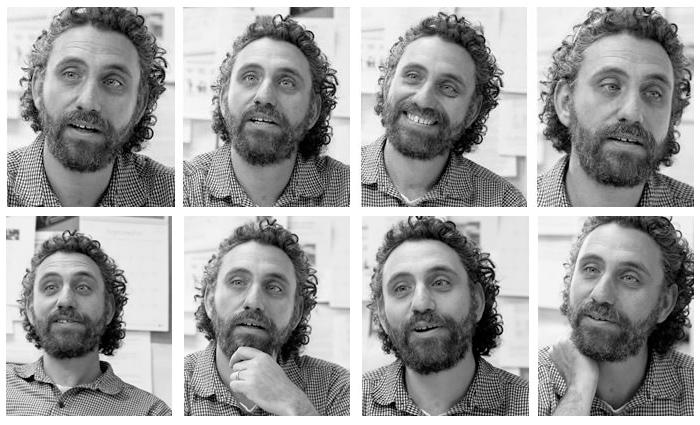Michael Beevers

FOCUS ON FACULTY
by Christine Baksi
As an expert on global environmental politics and environmental security, your research examines the connection between the environment and natural resources, and a war-torn country's efforts to emerge from civil conflict and build a sustainable peace. How are these things linked?
The civil conflicts that I study—like all wars—are extremely destructive. The human toll of death, displacement and trauma can be massive. Roads, schools, hospitals, water facilities and government institutions are often destroyed; people's livelihoods are upended; and economic development slows to a halt. What's more, countries emerging from conflict are susceptible to renewed violence. So, the challenges are indeed substantial and the stakes for building peace are high.
Stability is difficult to achieve if people do not have enough water, arable land or forests resources. Valuable natural resources like diamonds, minerals and timber—which at times help to fuel conflict—also need to be managed in ways that simultaneously build trust, sustain livelihoods and fund postconflict reconstruction. If the benefits of natural resources are not shared equitably with local communities, corrupt officials siphon off resource revenues, or land is sold to the highest bidder, the likelihood of renewed tension and resentment increases. How the environment and natural resources are governed can have a striking impact on the conditions that lead to peace and the overall trajectory of peacebuilding.
In Sierra Leone, where you conduct research and served as a United Nations consultant, a new president will soon be elected. In terms of the country's resource governance and struggles to distance itself from the "blood diamond" era, how pivotal is this election?
The management of diamonds—as well as minerals like iron ore, rutile and bauxite—has been at the center of efforts to consolidate peace by promoting growth, providing jobs and alleviating poverty. Not surprisingly, this is a central issue in the upcoming presidential election in November.
The incumbent Ernest Bai Koroma is going up against former military junta leader Maada Bio and there is a lot at stake. First, despite the fact that diamond exports totaled around $130 million last year, the country remains one of the poorest in the world. Those who work in diamond mines, in particular, are among the most vulnerable and impoverished. I think addressing working conditions, inequalities and ensuring that communities have basic services is vital to continued stability.
Also at issue is whether the mineral sector—worth perhaps a billion dollars annually within 10 years—will serve as a catalyst for peace and development. There is evidence that mining laws have not been properly vetted, agreements between the government and companies unfairly negotiated and communities excluded from decisions.
The extent to which the two candidates differ on these issues is uncertain, but diamonds and minerals will be front and center as the election gets closer. The election will help shine a much needed light on Sierra Leone's diamond and mineral sector that has been widely regarded as not only corrupt and secretive but routinely ignoring the needs the Sierra Leonean people. At best, these problems delay development and cause human suffering; at worst they undermine the likelihood of consolidating a sustainable peace.
Your work lends itself to interdisciplinary study and global engagement. How do you incorporate these concepts into the classroom?
Focusing on the connections among the environment, natural resources and peacebuilding requires crossing academic disciplines and integrating different schools of thought. One has to be conversant in international relations, comparative politics and political economy to understand the dynamics of violent conflict, African politics and the emergence of peacebuilding as an idea in world politics. It is also critical to understand how the environment affects human survival and development and serves as the raw material of natural resources and ecosystem services. An interdisciplinary background helps me to see and understand different connections that might otherwise go unnoticed.
I am currently teaching a class on Global Environmental Change and Human Security and I try to convey to students that to really comprehend these issues we cannot be restricted to an academic discipline or narrow specialty. I do my best to provide varied perspectives and get the class to see how the totality of what we know comes from integrating knowledge. It is certainly a challenge to bring other countries into the classroom. What works best for me is to provide students with as many voices and as much context as possible and ultimately link what is happening around the world—and in places that seem so far away—with what students are familiar with right here.
Your former U.N. colleague Richard Matthew will present a lecture at Dickinson on Oct. 10. Give us a preview.
Richard is one of the foremost experts on unconventional notions of security and the environmental dimensions of peace and security. What sets him apart is his genuine commitment to fieldwork and to visiting the areas that he studies and writes about. I'm sure he will discuss the role that natural resources can play in fomenting conflict and catalyzing peace in war-torn societies, and he will ground his analysis in the people he has met and places he has traveled. I can guarantee it will be insightful and eye-opening.
How can we learn more about these issues?
Here's some suggested reading:
Richard Matthew et al. (eds.), Global Environmental Change and Human Security, Cambridge: Cambridge University Press, 2010.
Geoffrey Dabelko, "An Uncommon Peace: Environment, Development and the Global Security Agenda", Environment, Vol. 50, No. 3, 2008, pp. 32-45.
United Nations Environment Programme, From Conflict to Peacebuilding: The Role of Natural Resources and the Environment. Geneva: UNEP, 2009. Päivi Lujala and Siri Aas Rustad (eds.), High-Value Natural Resources and Post-Conflict Peacebuilding, New York: Routledge, 2012.
Published October 5, 2012